Outdoor Philodendron Care – How To Care For Philodendrons In The Garden
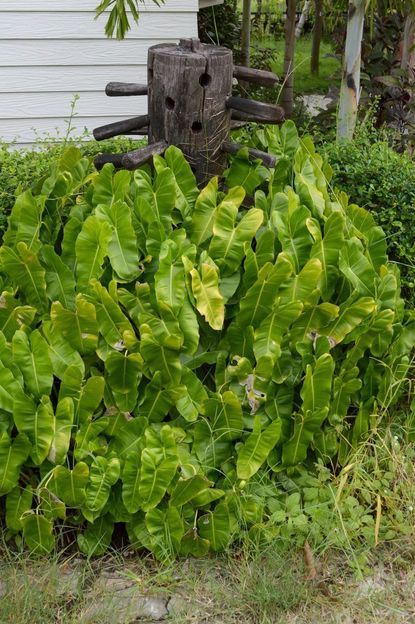

The name ‘Philodendron’ means ‘tree loving’ in Greek and, believe me, there is plenty to love. When you think of philodendron, you may envision a houseplant with big, heart-shaped leaves, but there are actually several hundred species of these beautiful tropical foliage plants featured in a wide variety of leaf sizes, shapes, and colors. A majority of the species are vining, with leaves 3 inches (8 cm.) to 3 feet (91 cm.) in length, while others are in more of a shrub shape (self-heading). While they have a reputation as great easy-to-grow houseplants, can philodendron plants grow outdoors? Why yes, they can! So, let’s learn more about how to care for philodendrons outside!
Outdoor Philodendron Care
When learning how to care for philodendrons, it is best to consider the growing criteria for your specific variety; however, this article can help provide you with a general overview of outdoor philodendron care. The first question you should ask is, “In my region, can philodendron plants grow outdoors?" Given that philodendrons are tropical plants, you will only be able to grow them outside year-round, with any measure of success, in a warm weather climate where temperatures do not dip below 55 degrees F. (13 C.) at night, although 65 degrees F. (18 C.) is more ideal since they really do not like the cold. The rest of us, including myself, as I live in the northeast U.S., will be carting our philodendron plants in their respective containers indoors and out, according to the season and the reading on the temperature gauge. Given that philodendrons can reach some significant height, I’m sure that some of us with container philodendrons will opt to keep our plants inside year-round, but I prefer to give mine some outdoor time, as it really seems to boost growth. When planting philodendrons in the garden, or when situating your philodendron container outdoors, you need to consider that philodendrons are forest dwelling plants that are best served in a location that provides shade and indirect sunlight. Full sunlight will cause yellow sunburnt leaves, and you don’t want that. The soil should be kept consistently moist but never soggy, be well draining, and rich in nutrients and organic matter. A light feeding every three to four months with granular food is also recommended when caring for your philodendron outside. Another important consideration to make when caring for your philodendron outside is that they are toxic to people and pets, causing severe inflammation of the mouth and throat. Their sap is also known to cause skin irritation, so please be sure to wear gloves when trimming the plant and to disinfect pruning tools upon completion of pruning tasks. Pruning is not really a requirement for promoting growth for your philodendrons in the garden, but you may need to trim away dead or yellow leaves on occasion.
Gardening tips, videos, info and more delivered right to your inbox!
Sign up for the Gardening Know How newsletter today and receive a free download of our most popular eBook "How to Grow Delicious Tomatoes."

Shelley Pierce was a writer for Gardening Know How, contributing to hundreds of articles for the site.
-
 10 Best Apartment Plants To Turn Your Small Space Into An Oasis
10 Best Apartment Plants To Turn Your Small Space Into An OasisThe best apartment plants can lend an ambience of the tropics, brighten up a space, or add a touch of drama, and turn an apartment into a relaxing oasis.
By Amy Grant
-
 Grow a Bathroom Oasis: 8 Best Bathroom Plants With No Light or Low Light
Grow a Bathroom Oasis: 8 Best Bathroom Plants With No Light or Low LightSome apartment dwellers grow the best bathroom plants with no light or low light. Read how one of our favorite plant lovers does it in the big city.
By Teo Spengler
-
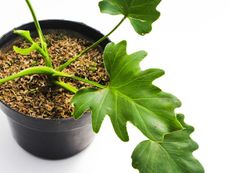 How To Grow Philodendrons "Hope" and "Little Hope"
How To Grow Philodendrons "Hope" and "Little Hope"Click here to learn how to grow a philodendron ‘Little Hope’ plant, as well as its big cousin 'Hope.'
By Mary Ellen Ellis
-
 How to Propagate Philodendron Plants: Philodendron Propagation Tips
How to Propagate Philodendron Plants: Philodendron Propagation TipsWhen philodendron vines get too long, you can take cuttings from the plant to grow more. Read on to learn more about philodendron propagation.
By Laura Walters
-
 Philodendron Brandtianum Care – Growing Silver Leaf Philodendrons
Philodendron Brandtianum Care – Growing Silver Leaf PhilodendronsSilver leaf philodendrons are attractive, tropical plants with olive green leaves splashed with silvery markings and tend to be bushier than most other philodendrons. For more information on the Brandi philodendron variety, click the following article.
By Mary H. Dyer
-
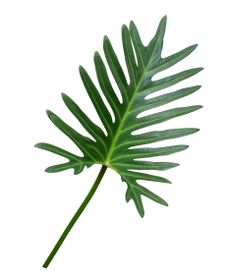 Xanadu Philodendron Care: Tips For Growing Xanadu Philodendrons Indoors
Xanadu Philodendron Care: Tips For Growing Xanadu Philodendrons IndoorsIf you enjoy growing houseplants, then you may want to consider adding the Xanadu philodendron houseplant to your list. Xanadu philodendron care is simple and this larger plant makes a wonderful vertical accent in the home. Learn more in this article.
By Raffaele Di Lallo
-
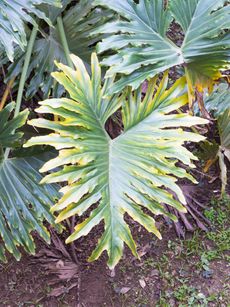 Split Leaf Elephant Ear Plant: What Is A Selloum Philodendron
Split Leaf Elephant Ear Plant: What Is A Selloum PhilodendronPhilodendron selloum is an easy plant to grow. You get a lot of plant for minimal effort, as it will grow into a large shrub or small tree with large, decorative leaves and requires little care. Learn more about these “split-leaf” philodendron plants here.
By Mary Ellen Ellis
-
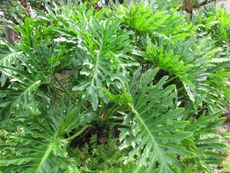 Tree Philodendron Houseplants: How To Grow A Tree Philodendron Plant
Tree Philodendron Houseplants: How To Grow A Tree Philodendron PlantTree philodendron houseplants are long-lived plants that need only the simplest of care. In fact, too much TLC might make them grow so large you’re unable to move them indoors for the winter. Learn about tree philodendron care in this article.
By Becca Badgett
-
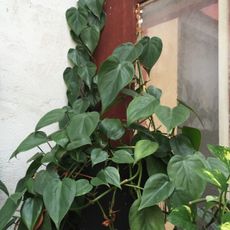 Can You Cut Back Philodendrons: Tips On Pruning A Philodendron Plant
Can You Cut Back Philodendrons: Tips On Pruning A Philodendron PlantCan you cut back philodendrons? Yes, you sure can. Although they don't require a lot of pruning, occasionally cutting back philodendron plants keeps these beauties looking their best and from becoming too large. This article will explain more.
By Mary H. Dyer
-
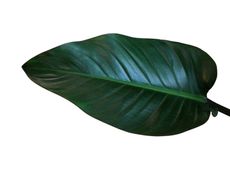 Philodendron Information – What Is A Congo Rojo Philodendron
Philodendron Information – What Is A Congo Rojo PhilodendronThe philodendron Congo Rojo is an attractive warm weather plant that produces showy flowers and interesting leaves. It gets the name "rojo" from its new leaves, which unfurl in a deep, shiny red fading to a burgundy green color once mature. Learn more here.
By Liz Baessler